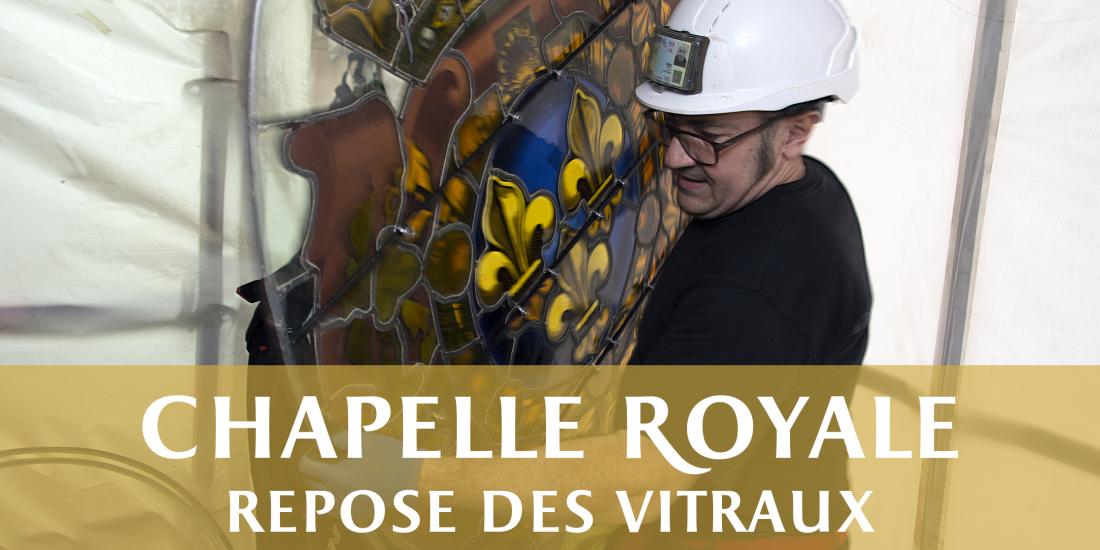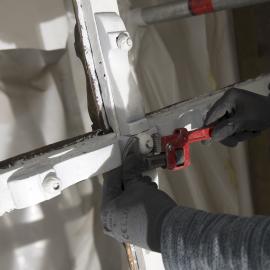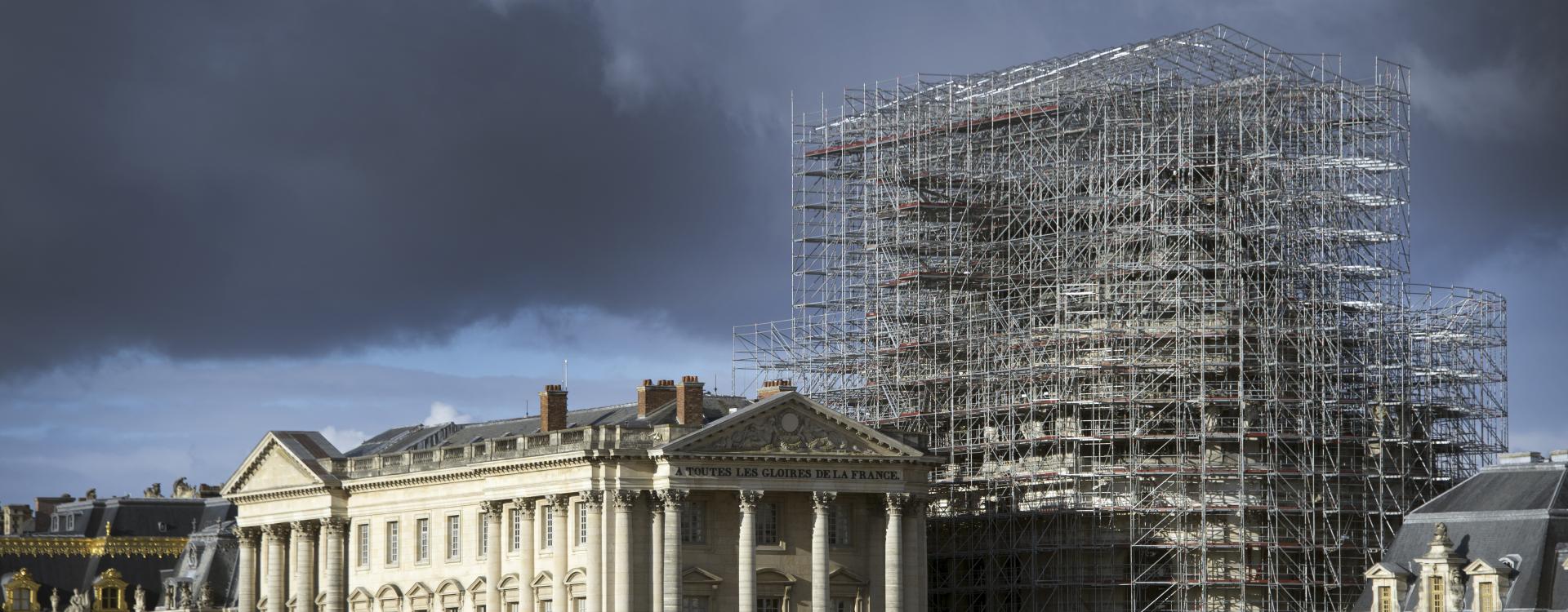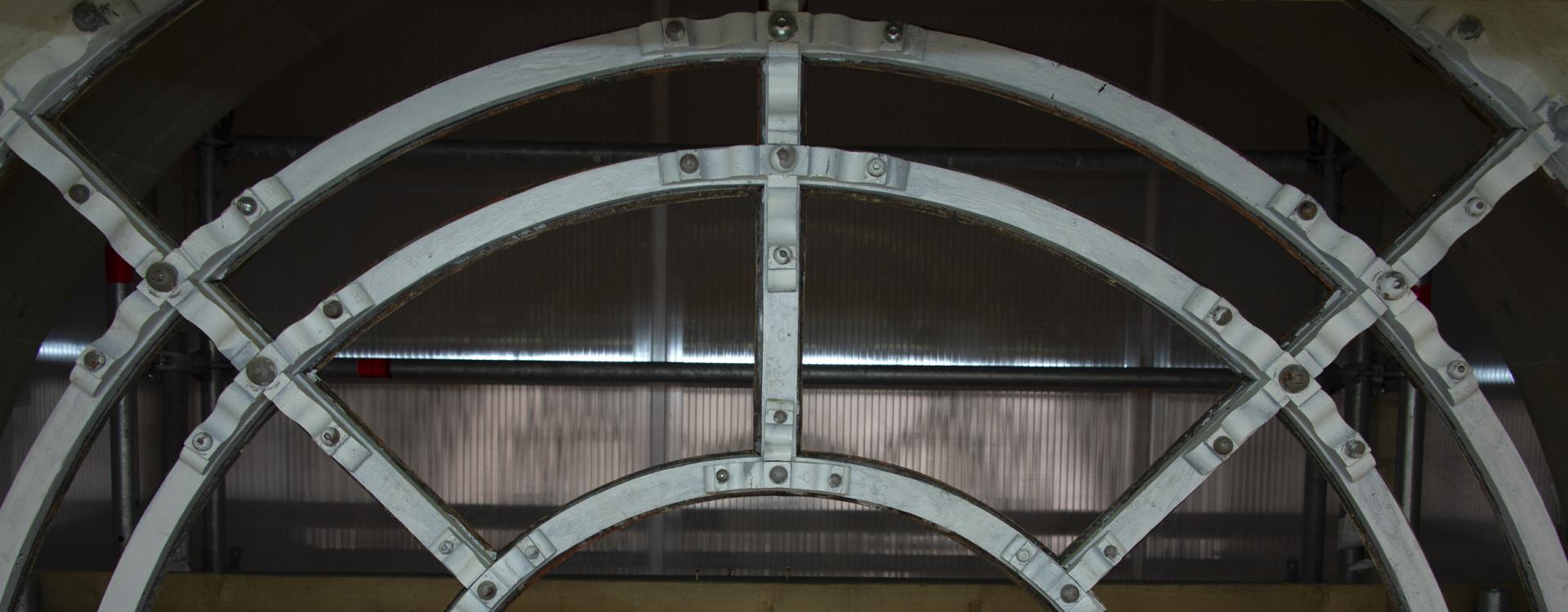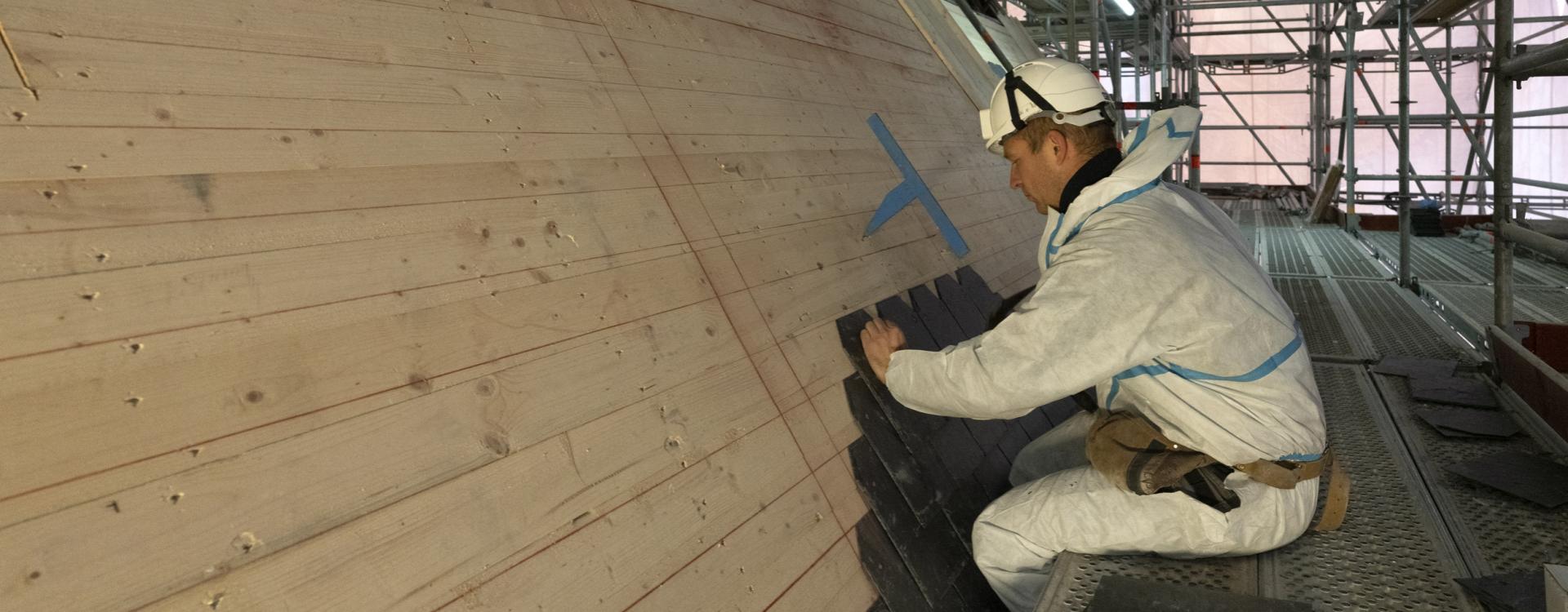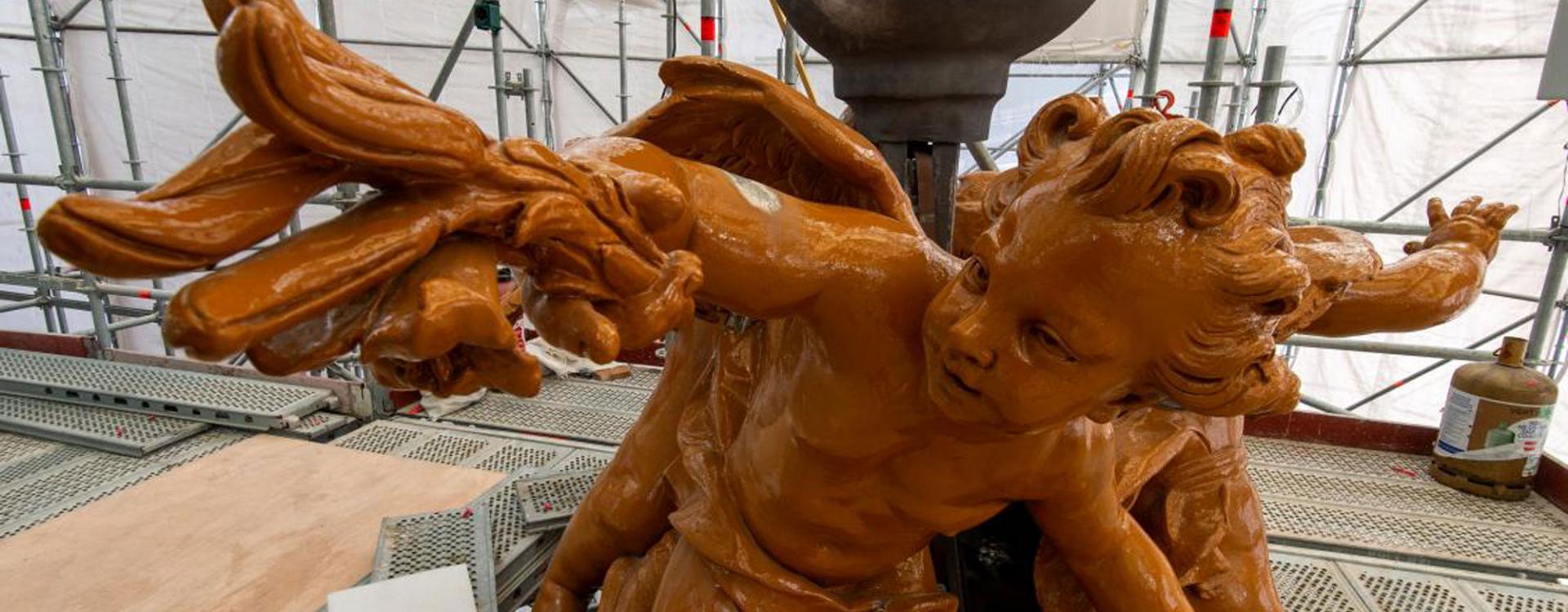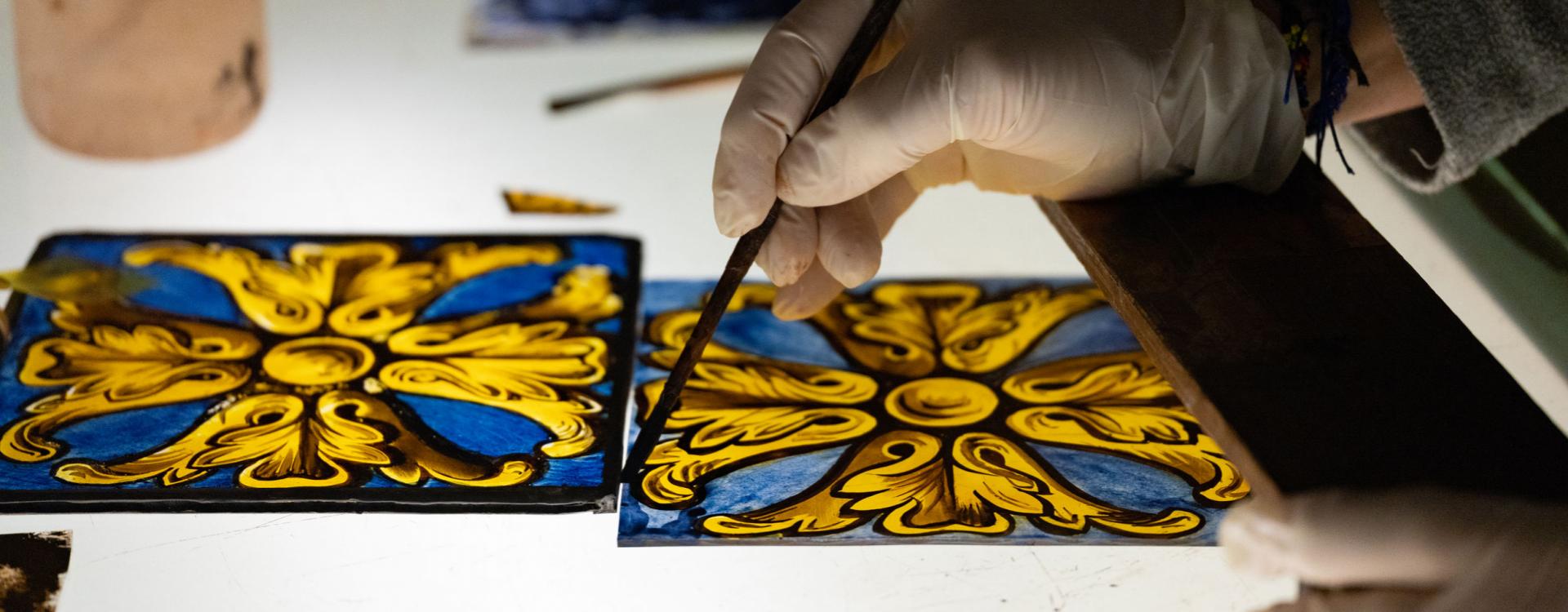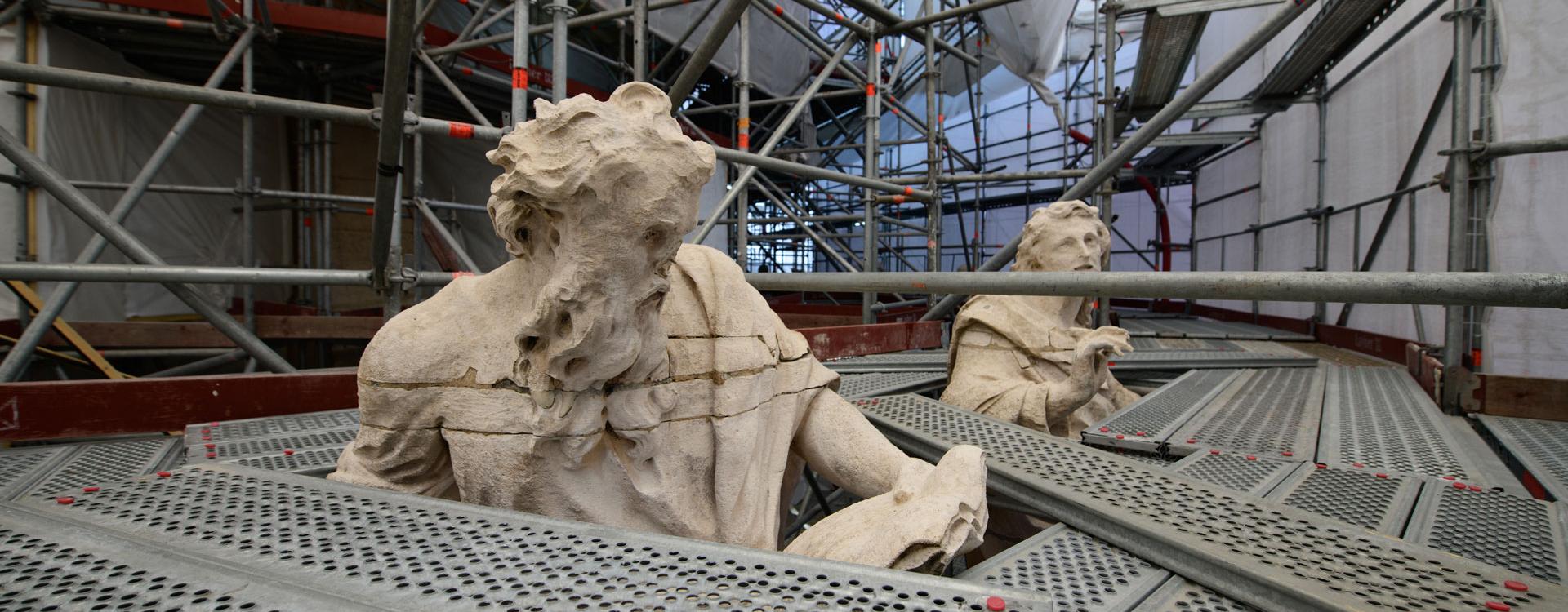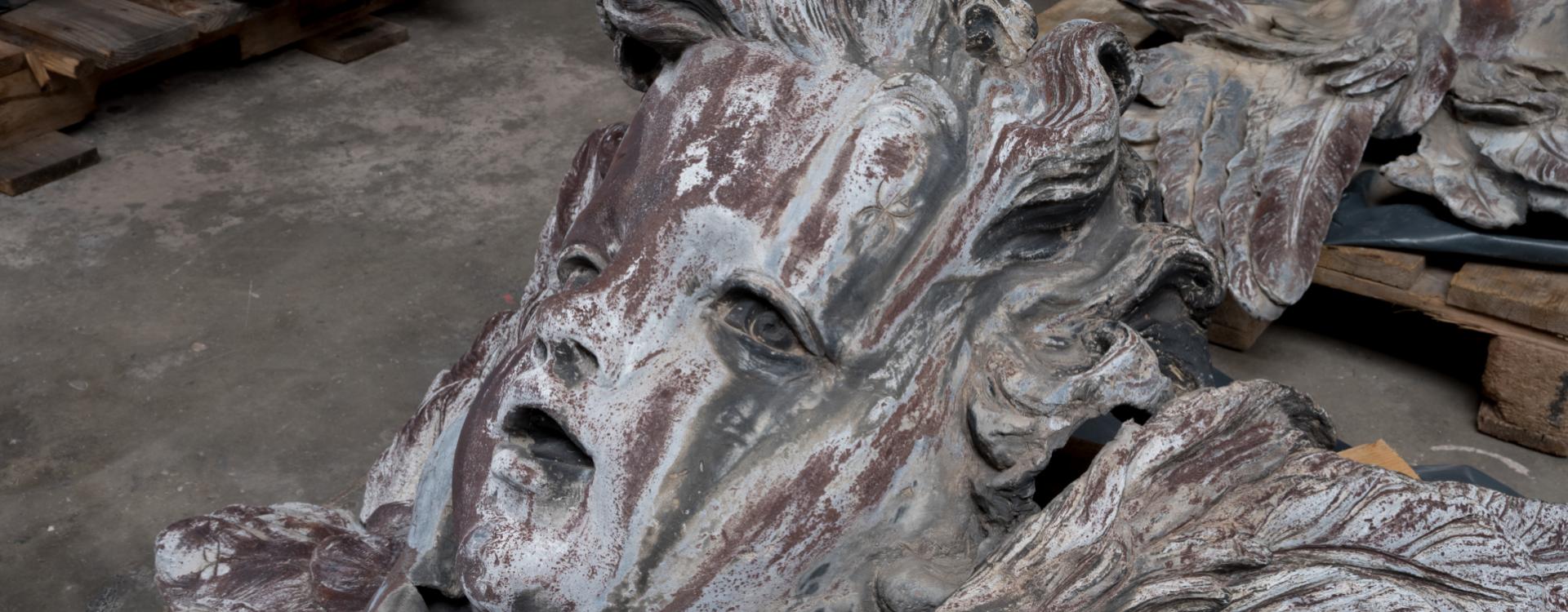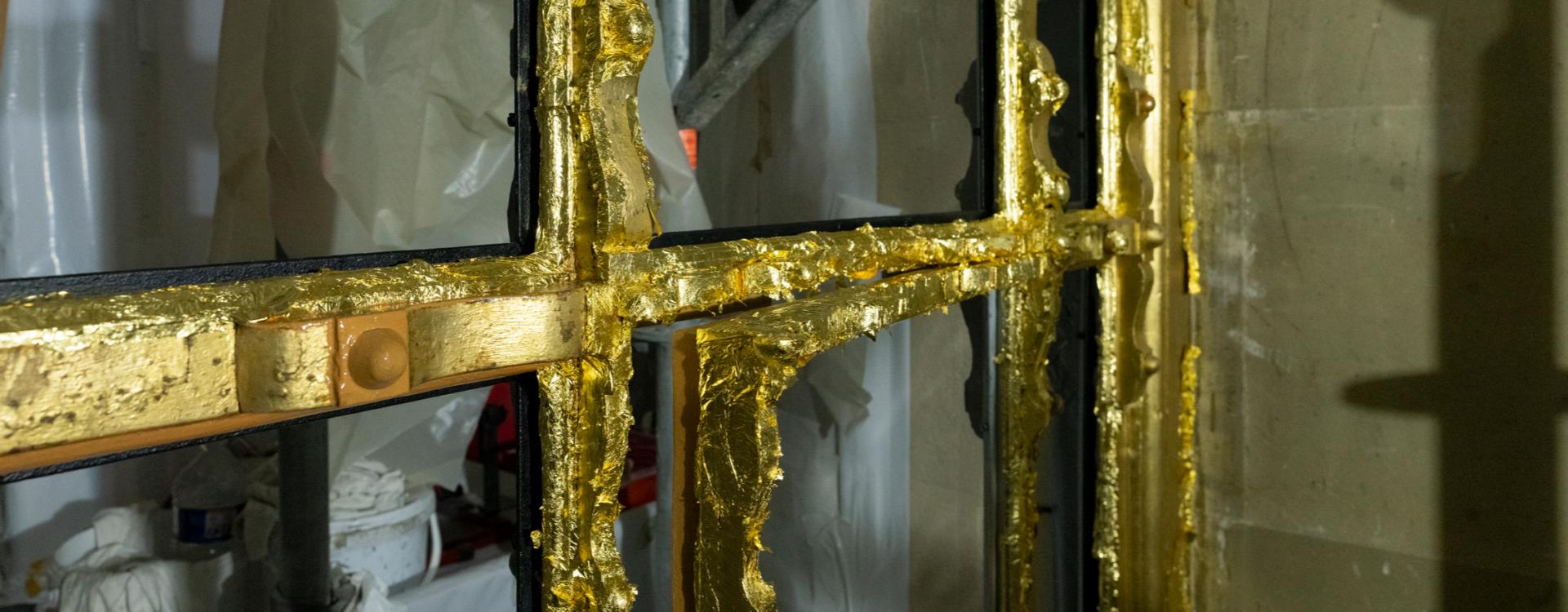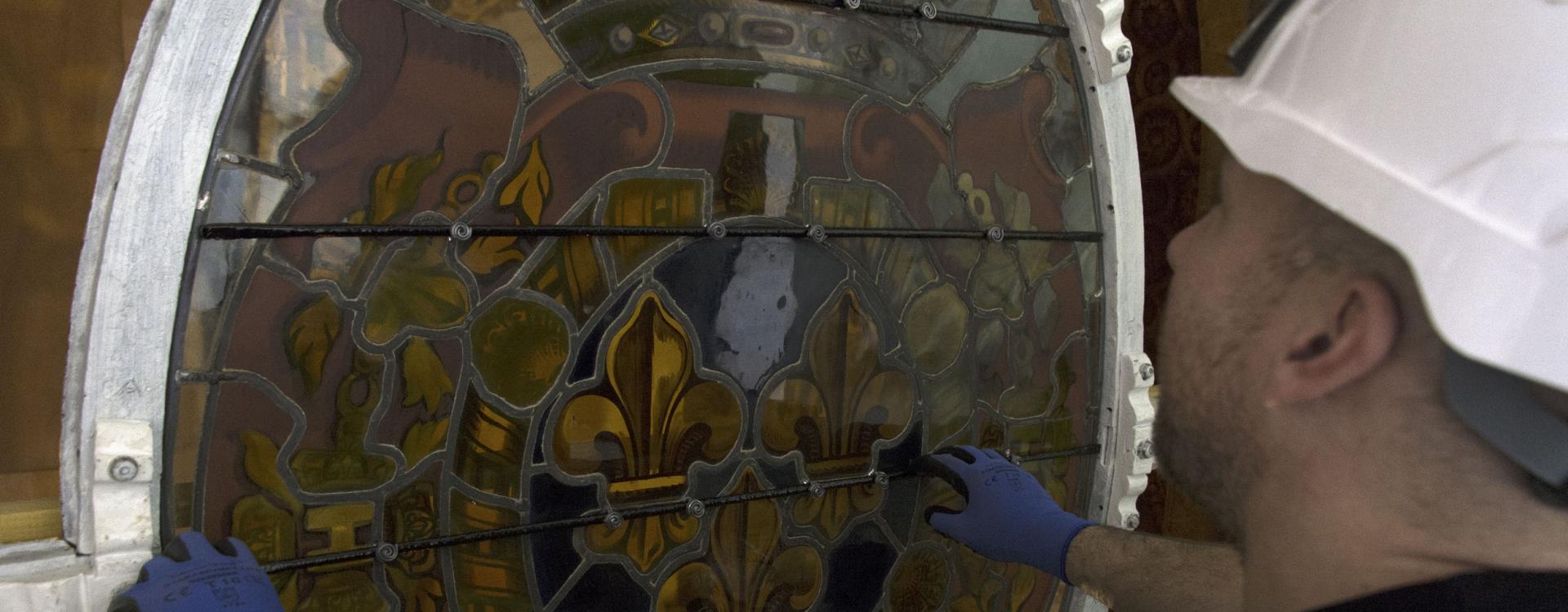Two years after their removal and complete restoration in the workshop, the stained-glass windows are returning to their positions in the facades of the Royal Chapel. The windows are reconstituted in several stages: the metal joinery is installed, then the glass and stained glass, followed by the glazing beads. Once the stained-glass windows have been restored to their precise positions and maintained in place with mastic and provisional wooden wedges, the metalworkers secure the glazing beads. These metal profiles are used to hold the windows in position in order to provide secure insulation. As some elements were missing or too deteriorated, certain profile models were duplicated in order to reproduce profiles identical to the original ones. After such a restoration, the light is again magnificent.
Episode X Repositioning the stained glass windows 2020
The construction of the Royal Chapel was the first site to use such a glazing bead system to secure stained glass windows. The metalworkers and stained-glass glaziers are working together to reposition the old windows and thus reconstitute the artistic passage of light into the heart of the Chapel, while still providing efficient and long-lasting waterproofing.
8
metres – height of a window.
532
m2 of stained glass windows in the whole edifice
4
people to remove the stained-glass windows
They intervene at this step
Restore the passage of light
Repositioning the stained glass windows
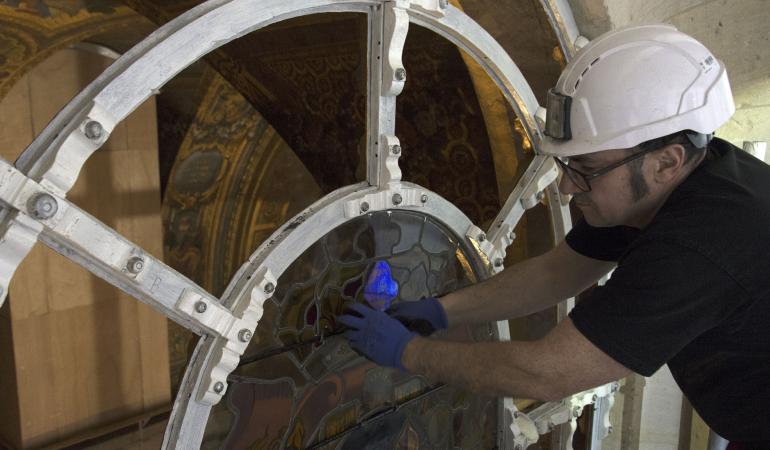
"Two people are in charge of positioning the stained-glass windows, while a third person cleans them and prepares them in the correct order."
— Cyril James
Repositioning the glazing beads
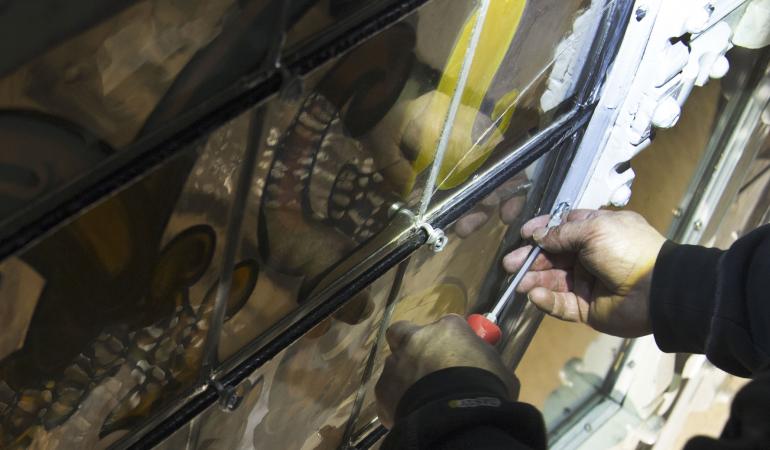
"It takes about one day to position a window."
— Cyril James




